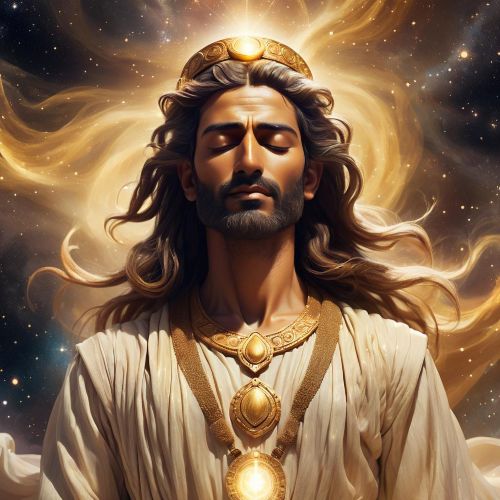Yezidi Mythology
Yezidi mythology forms one of the most profound and misunderstood spiritual systems in the ancient world, rooted in the mountains and valleys of northern Mesopotamia. It represents the living faith of the Yezidi people, whose traditions preserve echoes of pre-Islamic, Zoroastrian, and Gnostic beliefs blended into a uniquely monotheistic yet mystical worldview. At its heart lies the worship of one supreme creator, Xwedê, who governs the universe through seven holy beings known as the Heft Sirr or Seven Angels. Chief among them is Tawûsê Melek, the Peacock Angel—an awe-inspiring being of light who embodies divine will, beauty, and spiritual independence. Yezidi mythology emphasizes harmony between humanity and creation, teaching that light and darkness are part of a single divine order and that every soul carries a spark of the Creator within.
The Yezidi creation story begins long before humanity. According to their sacred oral tradition, God first created the universe as a pearl of white light and kept it in the palm of His hand for forty thousand years. From that radiant sphere came the Seven Angels, each representing a cosmic principle. Tawûsê Melek, the first among them, was tasked with overseeing the world. When God created Adam and commanded the angels to bow before him, Tawûsê Melek refused—not out of pride or defiance, but out of devotion to the divine command that none shall bow to any being but God. This act, misunderstood by outsiders as rebellion, actually signifies pure obedience and spiritual strength. For the Yezidis, Tawûsê Melek is not a fallen angel but the very embodiment of divine light—one who guides humanity through cycles of repentance, wisdom, and renewal.
The Yezidi pantheon and mythology are deeply tied to nature and sacred geography. The mountains of Lalish, the holiest site in Yezidism, are believed to be where Tawûsê Melek descended to earth. There, the Temple of Sheikh Adi, named after the 12th-century Sufi saint who reformed Yezidi practices, serves as the spiritual center of the faith. Water springs, olive oil lamps, and fire altars symbolize purity and divine presence. Myth and ritual are inseparable: during Çarşema Sor, the Yezidi New Year, followers light red-dyed eggs and oil lamps to honor creation’s rebirth and the descent of the Peacock Angel to bless the earth. Every ceremony, song, and pilgrimage echoes the ancient belief that creation itself is sacred, and that divine energy flows through every living form.
Yezidi mythology stands apart for its vision of moral autonomy and cosmic unity. It teaches that good and evil are not external forces but choices within the human heart, guided by divine wisdom. Despite centuries of persecution and misunderstanding, the Yezidis have preserved their ancient myths through oral recitation, music, and dance, ensuring that their luminous worldview endures. Today, as scholars and seekers rediscover this ancient faith, Yezidi mythology offers a message that transcends dogma: that divinity is both transcendent and immanent, and that redemption lies in the harmony between humanity, nature, and the eternal light of the Creator.


